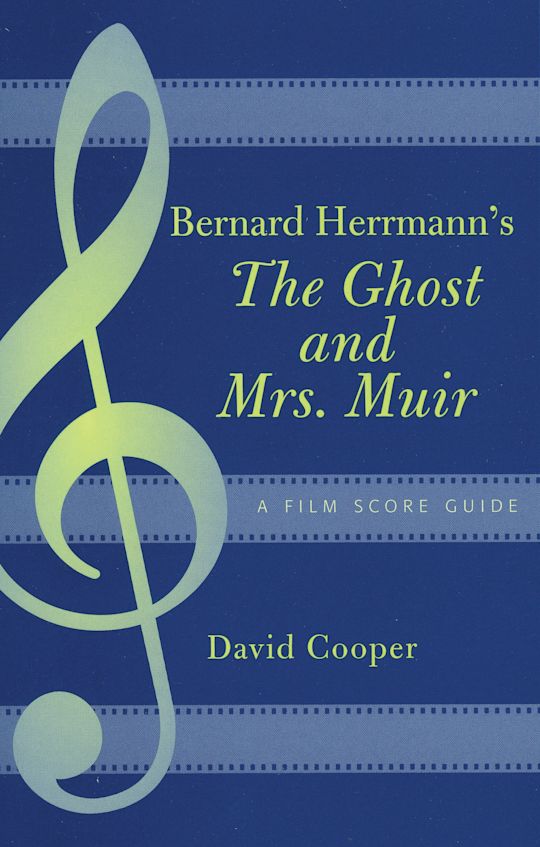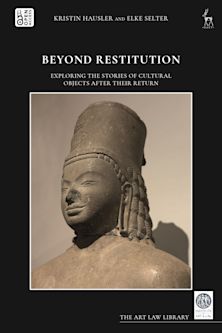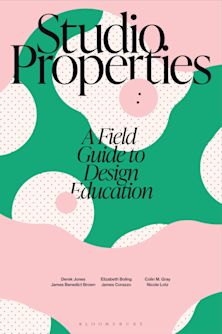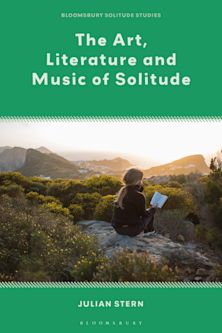- Home
- ACADEMIC
- Art & Visual Culture
- Art and Visual Culture - Other
- Bernard Herrmann's The Ghost and Mrs. Muir
This product is usually dispatched within 3 days
- Delivery and returns info
-
Free CA delivery on orders $40 or over
You must sign in to add this item to your wishlist. Please sign in or create an account
Description
Regarded as one of the greatest film composers of all time, Bernard Herrmann was responsible for some of the most memorable music in film. His work with Alfred Hitchcock produced a slew of classics including Vertigo (1958), North by Northwest (1959), and Psycho (1960). Several years before collaborating with Hitchcock, however, Herrmann composed the brilliant score for The Ghost and Mrs. Muir (1947), which remained a personal favorite of the composer's. Herrmann's score reinforces the film's romantic theme, and much of the music has an appropriately elegiac quality. In mood, orchestration, and even to some extent thematic identity, it seems to prefigure his music for Vertigo.
In this latest addition to the Scarecrow Film Score Guide series, author David Cooper examines Herrmann's career in general, as well as the specific elements that went into the creation of The Ghost and Mrs. Muir's score. Cooper traces the development of Herrmann's craft as a film composer, especially through his radio work, where he made contact with many of the great artists of the age, most notably Orson Welles. This association was to give him a passport to Hollywood and led to the scoring of his first film, Citizen Kane. Herrmann's subsequent film scores of the 1940s included The Devil and Daniel Webster, The Magnificent Ambersons, and Jane Eyre.
In this guide, Cooper considers Herrmann's musical technique and offers a theorization of some of the ways in which music can be "meaningful" in film. He also explores non-musical contexts of the film, including the screenplay's relationship to the popular novel from which it was adapted, as well as the contribution of director Joseph L. Mankiewicz, the performances of Gene Tierney and Rex Harrison, and the editing of Dorothy Spencer. Cooper also provides a quantitative, evidence-based study of the score. In doing so, he discusses the extent to which Herrmann adopted screenwriter Philip Dunne's suggestions for music in
Table of Contents
Part 2 Abbreviations
Part 3 Editor's Foreword
Part 4 Acknowledgments
Part 5 Introduction
Chapter 6 1. Herrmann's Career up to the Composition of The Ghost and Mrs. Muir
Chapter 7 2. Musical Style and Musical Meaning: Herrmann's Film Scoring Technique
Chapter 8 3. Literary, Filmic and Critical Context of the Score
Chapter 9 4. Overview of the Score as a Musical Text
Chapter 10 5. Analysis and Readings of the Score
Part 11 Notes
Part 12 Bibliography
Part 13 Index
Part 14 About the Author
Product details
| Published | Aug 04 2005 |
|---|---|
| Format | Paperback |
| Edition | 1st |
| Extent | 192 |
| ISBN | 9780810856790 |
| Imprint | Scarecrow Press |
| Dimensions | 214 x 140 mm |
| Series | Film Score Guides |
| Publisher | Bloomsbury Publishing |
About the contributors
Reviews
-
...David Cooper's approach-tightly organized like an intro film theory class-will instill, certainly in some, new methods of appreciating film music....Like prior volumes in the series, the book's first section gives us an excellent portrait of the events that led the cast, crew, and composer towards the film project...Cooper's technical and theoretical breakdowns will be of particular interest to composers...There's no doubt this book is the result of a long and detailed effort to craft an important educational reference...
Music From The Movies
-
In this guide, Cooper (music and technology, U. of Leeds, UK) examines Bernard Herrmann's craft as a film composer, particularly in the score of The Ghost and Mrs. Muir. He also explores nonmusical elements of the film, including the screenplay's relationship to the popular novel from which it was adapted, the contribution of director Joseph Mankiewicz, and the performances of Gene Tierney and Rex Harrison. A rundown of all the cues in Herrmann's manuscript is followed by an examination of the score as a musical artifact.
Reference and Research Book News


































